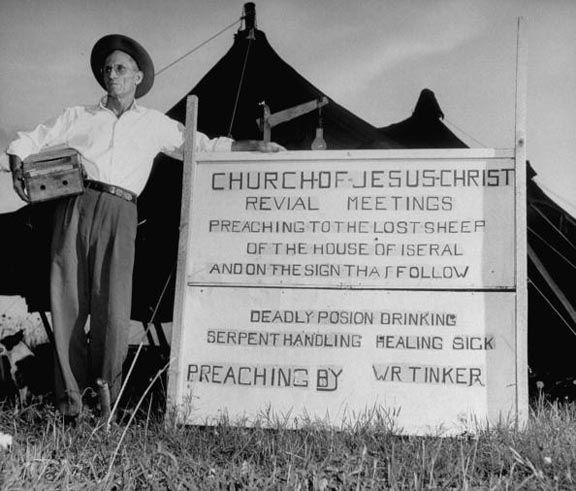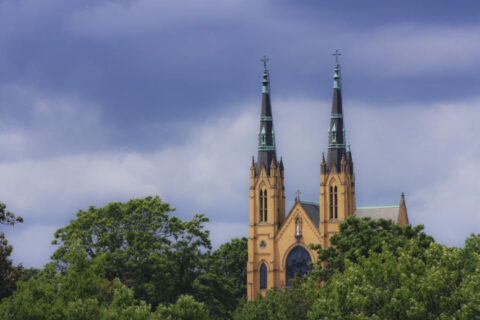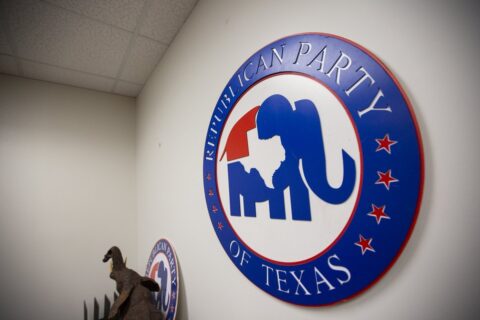Unlike many in the Dissident Right who say that “whiteness” is all that matters, most of us at Identity Dixie acknowledge the fact that religion is a significant component of one’s culture. This influence (for good or bad) is obvious in the culture/cultures of the various American Colonies. The religious beliefs of the early Colonies were diverse, yet shared a common origin primarily from the English Reformation. Remnants from the early Anglo/American religious thought can still be seen in American Christianity today in modern Evangelicalism, as well as, the numerous cults/sects that have appeared since the Founding.
As was mentioned earlier, the religious beliefs in the early Colonies were quite diverse, but the one thing that united them was their origin in the English Reformation. The three main streams of thought to come out of the English Reformation were Anglicanism, Puritanism and the Anabaptist movement. Later American religious movements would evolve from these founding beliefs and would also come to be heavily influenced by German Pietism.
In the early days of the American Colonies, each Colony was settled by folks of similar denominations/religious affiliation. New England was largely set settled by Congregationalist Puritans, with a minority of Presbyterians settling the backcountry of Maine and New Hampshire. Rhode Island was founded as place of religious freedom by the Baptists who were disliked by both Puritans/Presbyterians and Anglicans for their insistence on Believer’s Baptism. Maryland was originally a safe haven for Catholics. The Mid-Atlantic region had a wide variety of denominations including Presbyterians, Anglicans, Quakers, Dutch Reformed, and Pennsylvania Dutch who were primarily Mennonites/Amish. Pennsylvania was granted to William Penn as a Quaker colony, although their influence was minor in comparison to other denominations. This was due in large part to their pacifism and their rejection of political involvement. The South, specifically the Virginia Tidewater, as well as, the South Carolina Low Country, was settled primarily by Anglicans. In addition, a significant presence of Scotts-Irish Presbyterians and Pennsylvania Dutch migrated south and settled in the South Carolina and Virginia backcountry.
The three main original established churches, the Anglican church, The Presbyterian Church and the Congregationalist church would continue to hold influence within American society but would unfortunately become a minority in the United States, often being associated with the elites and aristocracy of American society. The Baptist, Methodist, Restorationist Churches, and other new religious movements would soon become the denominations of the majority of the American people.
The decline of the original denominations can first be traced to the fact that the original denominations required trained and educated clergy. This was difficult in the early Colonies due to the lack of seminaries in the frontier. Unlike these founding denominations, the Baptist and Methodists didn’t require clergy to be educated at seminaries. Anyone could become a preacher in these traditions. Their zeal for evangelism and converting the backcountry settlements also didn’t hurt. In fact, the Methodists were well known for their circuit riders.
It was even harder for the Anglican Church, since they required their ministers/priests to be ordained by a bishop. This made it incredibly difficult to plant Anglican churches further inland due to the lack of priests and bishops. On top of this, the Anglican Church began to be associated with Toryism, which made it quite unpopular among most American Patriots. The anti-British sentiment was so strong that they ended up renaming the Church “the Episcopal Church” after the American Revolution. Despite being the denomination of most early Southerners, it would soon become almost non-existent in many parts of Dixie.
The First and Second Great Awakenings were also largely influential on American religion. The First Great Awakening began as a series of revivals in the 1730s and 1740s that stressed individual salvation, piety, and the “born again” experience. It was largely Calvinistic and included leaders such as George Whitefield, John Wesley and Jonathan Edwards. While it was often highly emotional, it remained mostly theologically orthodox unlike the later Great Awakenings. While the Great Awakening Revivals united evangelicals across various denominations, it wasn’t without controversy. Opponents accused the revivals of causing disorder and fanaticism within the churches by enabling uneducated, itinerant preachers and encouraging religious enthusiasm. This would lead to a split in the Presbyterian Church called the Old School–New School Controversy. The Old School Presbyterians tended to oppose the revivals while the New School supported them.
The Second Great Awakening started shortly after the first around the year 1800. Unlike the First Great Awakening, it was more Arminian rather than Calvinistic. During this time, and the years after, you had a large growth of heterodox/heretical sects in the “Burned Over District” of New York. This included many movements such as Mormonism, Millerism, Adventism, Restorationism, and Dispensationalism, the continued growth of Unitarianism, the Shakers and the Oneida Community. The time period shortly after also spawned other destructive ideas taken up by the “Social Gospel” crowd, including women’s suffrage, abolitionism and the temperance movement. During this time, the Pietist influence continued to grow stronger in American Christianity with its tendency to emphasize emotional experiences and feelings over theology. This was especially true with Finney who is credited with popularizing the “altar call.” Many rejected creeds and would live by the motto: “no creeds but Christ.” This was seen, especially, in the Restorationist movement which sought to restore Apostolic Christianity which they believed was totally lost after the death of the Apostles. In effect, much of American Christianity became what I call “the Ultra Puritans.” Essentially, even the Puritans were too “Catholic” for many because they said the Lord’s Prayer, recited the Creeds, baptized babies, and referenced the Church Fathers.
By the beginning of the 20th Century, things like prohibitionism/teetotalism, a general disapproval of dancing, playing cards, and movies/theatre became increasingly popular amongst Southern religion. A far cry from its Anglican founding. One can see this with the Second Klan, which had basically become a de facto Baptist organization. We also see Dispensationalism start to become the norm among Baptists, particularly after WWII – which was increasingly made popular with preachers such as D.L. Moody and Lewis Sperry Chafer.

The 20th Century also saw the birth of the Pentecostal movement with preachers such as Charles F. Parham and William Joseph Seymour and the ensuing Azusa Street Revival. The key tenant of the Pentecostal movement was the idea of “spiritual gifts.” These would include prophecies, faith healings, tongues, and even snake handling in some forms of West Virginia Pentecostalism! The most prominent “gift” was the “gift of tongues.” The idea was that speaking in tongues was evidence that one had truly had a salvation experience. Pentecostalism emphasized personal emotional experiences to new levels unseen in previous religious movements and is really Pietism taken to the extreme. Influential Pentecostal preachers include William Branham, Oral Roberts, and A. A. Allen. Although Pentecostalism didn’t gain widespread acceptance amongst mainstream Christianity until the second half of the 20th Century, their influence has definitely been felt. This influence has been felt with the Charismatic movement amongst non-Pentecostal denominations. The influence of the Charismatic movement can be most seen in Nondenominational and some Baptist churches.
The Jesus movement of the late 1960s and early 1970s is a prime example of the influence of the Pentecostal/Charismatic Movement within the United States. The Jesus movement was started in the West Coast among hippies who thought “conventional” Christianity was too stuffy and judgmental, and incompatible with their hippie values. The Jesus movement was mostly over by the 1980s, but its influence continued to grow. The Jesus movement was largely responsible for the growth of contemporary Christian music and worship. The movement was also key in the rising popularity of the Calvary Chapel and Vineyard churches. As one can see, the developments within American Christianity have been interesting to say the least.
The current state of American Christianity is not particularly good. While some of the ideas within American Christianity have had truth to them (such as the necessity of being born again and having true saving faith), the tendency within American Christianity to reject theology and Church History in exchange for emotional experiences is concerning to say the least. I don’t know the perfect answer, I think becoming more Biblically literate is a good start. I also believe that a return to more historical forms of Christianity would be a good move. Now, Rome is not the answer, for they have different problems. But, a return to a more historic Protestantism would be my answer.
-By Southern Anglican

O I’m a good old rebel, now that’s just what I am. For this “fair land of freedom” I do not care at all. I’m glad I fit against it, I only wish we’d won, And I don’t want no pardon for anything I done.






If you really want a more historic Christianity, come swim across the Tiber with me, it’s just fine over here!
https://www.youtube.com/watch?v=iKNjU0CZWkw I highly recommend this. Culture is all that matters not Race. “Race” as defined has no biological or scientific basis.
If race isn’t real, please explain sickle cell.
“Race” as defined has no biological or scientific basis. Of course, and neither does sex. Our Woke Lords have said so.
A common umbrella would be nice. Being anti-Baptist would be a nonstarter in Dixie today. I am not well informed on all the details that make one denomination different from another, and frankly lack interest to study it out (this topic always seemed petty and boring to me), so I am not the most qualified, but coming up with a common confession of beliefs that 90% of our people could get behind would be nice. It would be safe, even good to (further) drive a wedge between us and Congregationalism, Quakerism and Catholicism, but driving a wedge between Baptist, Methodist, Presbyterian and maybe even Pentecostal is probably a bad idea if we want to gain political traction.
While Anglican/Episcopal does not represent a large number of our people today, it may be possible to ratchet back a little bit in that direction. It might even be possible to revive the practice of naming godparents, which I believe a worthy practice that we should have kept. It would certainly be important if there were ever a war or plague that killed off large numbers…I know that’s never going to happen of course, but reviving the practice of godparenting would give our people a rebound advantage if it did.
The agreed upon beliefs must come first, then growth of adherents, then organization into a new denomination if there is going to be one. It would only be a good thing whether a denomination came out of it or not.
Reach me at @samspeaks on gab.
You skipped over the Third Great Awakening of the late late 19ty Century. Additionally, the Second, alongside the Third, had profound influence in Southerners. That being said, good article.
Good article, thanks for enlightening us. One omission though stands out, the artificial introduction of the “Judeo-Christian”. That may well deserve another article here, there was one written here before that I link to often, but another couldn’t hurt with it being such a devastating attack on our faith across all denominations. It should never go without mentioning, it is the source of untold damage to our spiritual fabric, it needs to die with our generation and the earth salted in its wake so that it may never take root again.